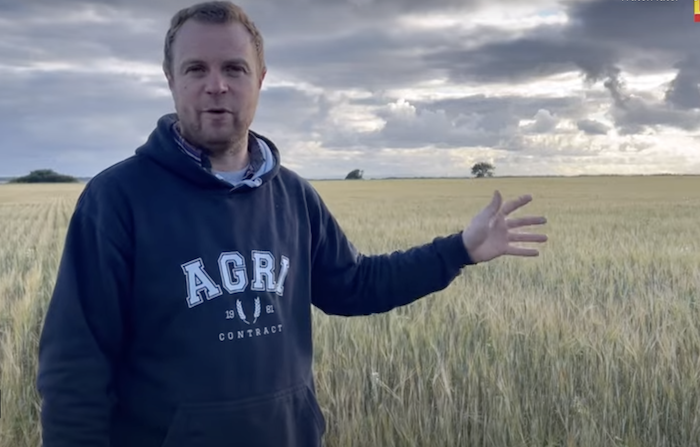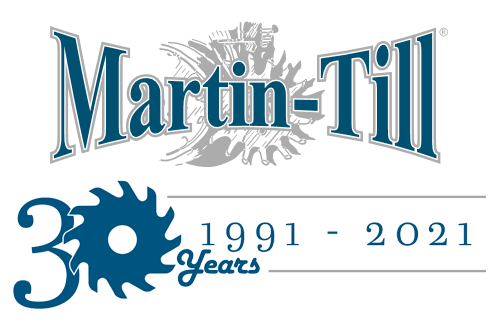By Emma Gillbard
Merseyside arable farmer Olly Harrison has extended his five-way rotation with an additional “summer” barley crop planted on 28 June.
After an early finish to harvest of winter barley on the sandy banks of the river Mersey, Harrison took the plunge to drill the 10ha field with some leftover spring barley seed the next day.
His aim was to gain an extra cash crop and make up for the fields’ disappointing winter barley yields, which saw the crop burn-off in the drought conditions.
Planting the spring barley variety Laureate at a seed rate of 170kg/ha (159 pounds per acre) with his Horsch Avatar direct drill, crops are now showing real promise, with hopes of a yield of 5t/ha (74.35 bushels per acre).
The crop received zero applications of fungicide, insecticides, or herbicides – its only input was 30kg/ha (26 pounds per acre) of nitrogen fertilizer.
“In a standard spring barley crop we would normally apply about 120kg/ha (108 pounds per acre) of fertilizer and a single fungicide spray, but we’re hoping the residual nitrogen in the soil will be available,” he says.
Harrison predicts harvest will be at the end of September/beginning of October, meaning the crop will have been in the ground for nearly 15 weeks.
“The grains are looking quite plump and the crop is starting to ripen and turn yellow," he says. "It looks like it could yield 5t/ha (74 bushels per acre), but even if it does 2.5t/ha (37 bushels per acre) it will still be profitable, with the minimum amount of inputs we have used."
“It’s had £400 worth of fertilizer, about £500 worth of seed and 30 liters of diesel to drill it," Harrison adds. "We’re hoping for 40-50t of grain and with a barley price where it is currently, it really stacks up.”
The 2022 season is the fourth time Harrison has grown “summer” barley at Water Lane Farm where he grows winter wheat, oilseed rape, spring barley, spring beans and winter barley, across 560ha (1,400 acres) on the outskirts of Liverpool.
“I’ve had various different successes of growing the crop over the past three years," he says. "I have successfully combined the crop twice, but on one occasion it failed and didn’t get bought through to harvest."
Last year’s summer barley was planted a month later and lost out on important daylight hours which saw the crop harvested on 21 December – the shortest day of the year – and consequently didn’t yield particularly well, according to Harrison.
“However, the crop that we never took through to harvest totally transformed the soil structure and the following crop of spring beans was amazing," he says. “This year, is certainly looking to be the best one yet. With a longer growing season, we were able to get the crop into the ground sooner.
“We’ve had the best chance and we’re looking set to achieve a commercial yield – certainly something worthwhile doing.”
Although he considered whole cropping the barley, Harrison is sticking with his original plans to combine the crop.
He intends to chop the straw to help improve soil organic matter and return vital P and K nutrients to the soil, before drilling a crop of spring beans next February and March.
Related Content:
What I've Learned From No-Tilling: Putting Worldly No-Till Knowledge To Work: After years of helping countless farmers make a lot of money, Bill Crabtree finally decided to make a go of it himself. In 2007, he bought 7,000 acres of farmable ground in northeast Morawa, Australia.
Zapping Weeds, Smashing Seeds: With growing concerns about herbicide resistance, Australian no-tillers are looking at new non-chemical ways to control serious weed problems.
Helping Zambia Reach its ‘Huge’ Farming Potential: Longtime Australian no-tiller Bill Crabtree is playing a major role in an organization determined to help Africa adopt modern farming methods.
The No-Till Passport series is brought to you by Martin Industries.
Since 1991, Martin Industries has designed, manufactured and sold leading agriculture equipment across the U.S. and Canada. Known for Martin-Till planter attachments, the company has expanded to include a five-step planting system, closing wheel systems, twisted drag chains, fertilizer openers and more in their lineup. Their durable and reliable planter attachments are making it possible for more and more farmers to plant into higher levels of residue.








Post a comment
Report Abusive Comment